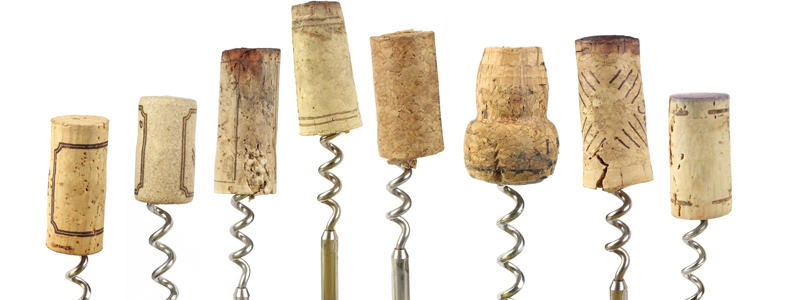At some point in your wine drinking experience, you’re going to encounter a wine that just seems off. Perhaps it’s the smell, or maybe it’s the taste, but whatever sense picks up the oddity, you’re going to have a very sneaking suspicion that something is wrong with the wine.
The good news is, if something is wrong with the wine, any restaurant or wine shop should take that wine back. But how do you tell something is wrong with it in the first place? Here are three of the most common wine defects, and how you can tell:
1. Cork Taint AKA Corked Wine
A wine being corked is the culprit people cite most often for the funky taste or smell of their wine and this makes sense, because the likelihood of a wine being corked occurs in about 1 out of every 20 bottles of wine. So it’s a good thing for you to know how to spot!
Before we explain what a corked wine is and how you can identify when this has occurred, let’s first explain what it isn’t:
- Cork taint is not little white crystals on the cork. These crystals, which are called tartrate, are a natural by-product of some wines and are totally harmless.
- Cork taint is not pieces of cork floating in the wine.
- Cork taint does not occur in a wine that was not closed with a real cork. Yep, that means you’re safe from this defect if the wine had a screw cap or synthetic (plastic) cork.
Corked wine is caused by a chemical called TCA that is created by microbial funghi that can sometimes live in the wood of the cork. When a cork has this compound present inside it, the minute TCA comes in contact with the wine, it ruins it. Here’s how you tell:
- The Smell – One of the easier ways to tell a wine is corked is by the distinct smell it gives off, which is similar to the smell of a wet dog, a dank basement or a wet pile of moldy newspapers.
- The Taste – If you still aren’t sure the wine is corked from the smell, take a sip. If the wine has no fruit flavors at all and tastes bitter and astringent, there’s a good chance that it’s corked.
2. Oxidation
Oxygen is wine’s biggest frenemy. When we first open a bottle of wine, oxygen is wonderful because it opens the wine up and causes its flavors to come alive, which is why we decant. However, the more a wine comes in contact with oxygen, the more it degrades, which ultimately causes the wine to become muted and dull.
Unfortunately, all wine closures are not airtight, and every once in a while, as a wine sits ready for you to purchase or order it, oxygen can slowly seep in. One of the best ways to help prevent this is by storing your wine correctly; if the wine was not stored correctly or there is a flaw in the closure, oxidation can occur.
Oxidized wine has no flavors or smells of fruit at all, and, depending on how long the wine has been in contact with the oxygen, it may even taste like vinegar.
3. Cooked Wine
Wine and heat don’t mix. If a wine is kept in warm temperatures, it can begin to cook, and that cooking leads to a very unpleasant drinking experience.
If your wine is cooked it will taste and smell like stewed fruit.
Another telltale sign of a cooked wine is what the cork looks like before you open the bottle. If a wine has been cooking, the pressure in the bottle from the heat should cause the cork to slightly push out from the neck of the bottle.
Even though you now know how to spot the three most likely culprits that cause a wine to go bad, it can still be difficult to identify when something is wrong with your wine. In fact, sometimes there can be nothing wrong with the wine at all, just a little “bottle shock” that needs some time to breathe. If you think something may be wrong with the wine, but it isn’t obvious, try decanting it first and give it 30 minutes or so. If after this time you still think something is wrong, return it.

Header image via Shutterstock.com

